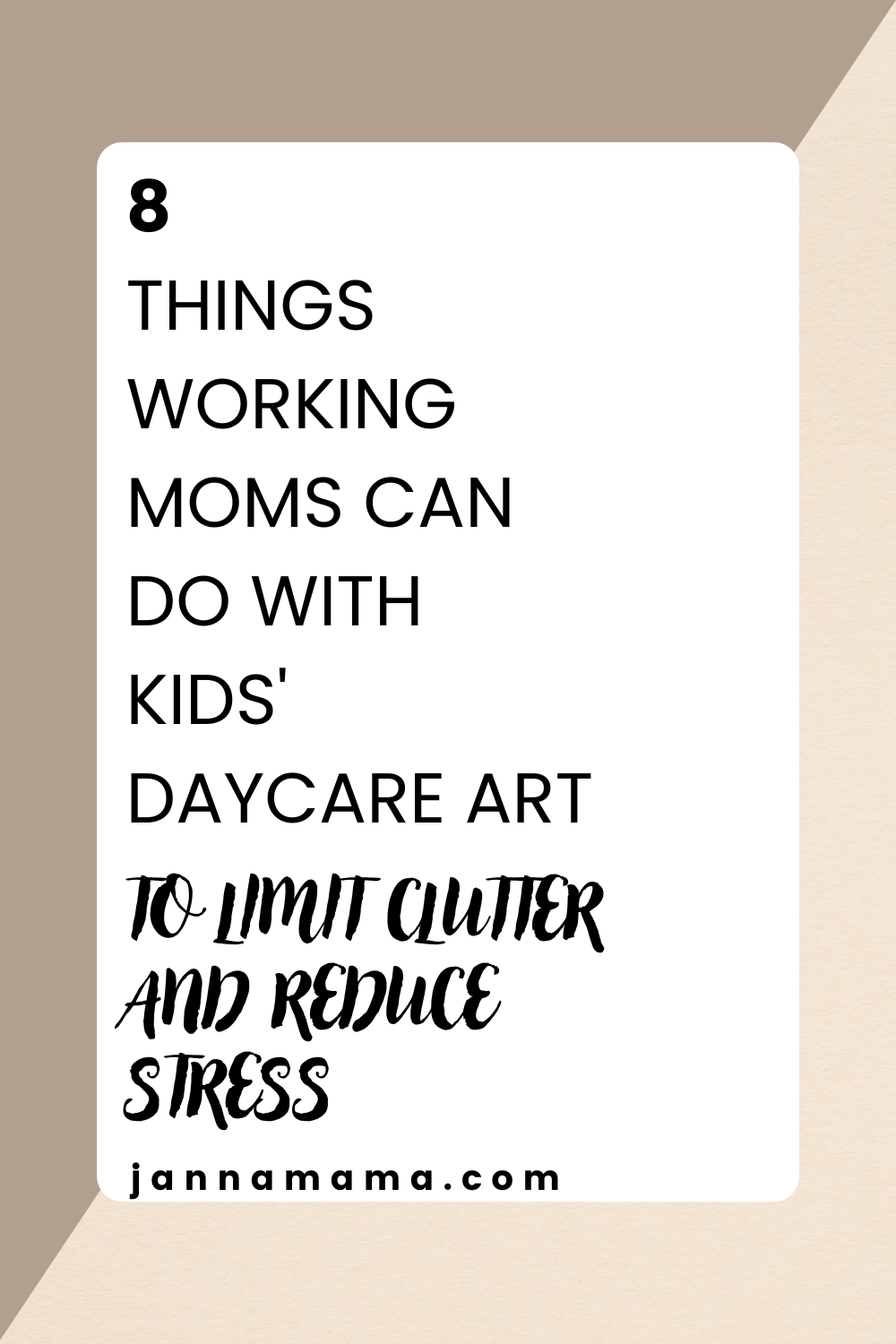Every week, my toddler comes home from daycare with a new masterpiece. Another adorable handprint tree, footprint animal, or pom pom craft makes its way into our home… and ends up in a large pile next to the staircase or strewn all over the dining table.
Call me silly, but I just don’t have the heart to throw them away. To me, they are little snippets of a time in my son’s life that I will never get back. That little handprint won’t be so tiny a few years from now.
But while I adore my child’s art, I don’t like a cluttered home. More clutter = more cleaning, more stress, and more anxiety. As a working mom, I barely have enough time to get through my own daily to-do list – the last thing I need is more cleaning.
Apart from creating more chores to do at home, physical clutter can contribute to increased stress and difficulty focusing. If you work from home, clutter can make it particularly difficult to concentrate on work.
Clutter is difficult to avoid when you have kids, but it’s a good idea to try to manage at least some of it. So what can we do with our kids’ art if we don’t want to throw it away but it’s creating a mess at home?
8 things to do with your child’s art to limit clutter at home

1. Make a physical album or scrapbook
Most of us have moved to sharing and storing our photos digitally, but physical albums are making a comeback these days. They are a timeless, tangible keepsake that can be passed down through generations, and they feel more personal than an electronic album. They’re certainly not just for photos either – your child’s artwork can be stored there to make their own little art portfolio. Wouldn’t that make the cutest gift for the grandparents? The downside is that bulkier crafts and artwork may not fit that well into a physical album.
2. Make a digital album
If you want to save and display your child’s artwork without keeping the originals, digital photo frames are a good alternative. They can usually hold a ton of photos or videos and can be mounted onto the wall to save countertop space. This might be a better option for those bulkier projects you can’t exactly put into a physical album. The downsides – you lose the tangible aspect of a traditional album, and digital frames can be expensive.
3. Use a kids art frame
Children’s art frames work like a traditional frame, but with a storage space behind the display that can hold 100 plus sheets of paper. Like a traditional frame, they can be either wall-mounted or placed on a flat surface. To use it, you simply open it up and put your kid’s latest project in while sliding the old one in the back. It’s a great way to store multiple pieces, but you will only be able to see the most recent one and it won’t hold the larger or bulkier ones very well. Children’s art frames might be a bit more suitable for baby and toddler art in the early years.
4. Give it to grandparents or other family members
Secondary to you, is there anybody who loves your child’s art more than their grandparents? Probably not. They love having little remnants of their grandkids around the house. That includes all the squiggly line drawings and cereal crafts they do while they are at daycare or school. Other family members – aunts, uncles, godparents – would also be happy to receive at least one work of art.
5. Recycle it
Now more than ever, it’s important to teach our kids about recycling and environmental awareness. When deciding what to do with some of their older or less favorite projects, you can bring up recycling as an option. It’s a good opportunity to talk to your kids about what kinds of materials can be recycled, the types of things that can be made from recycled paper, and why recycling is beneficial for the environment.
6. Make an art wall
Dedicating a wall to your child’s creative endeavors is a popular way to display their art while keeping the dining room table clear. All the walls near our staircases are covered with my son’s art projects. He loves talking about them and pointing out his favorites as we go up and down, and it lets him know that we are just as proud of his art as he is. But there’s only so much wall space. Also, if you prefer a more clean and uniform look in your home, a kids’ art wall might not work well with your home’s aesthetic.
7. Turn it into a book or collage
Some companies offer a paid service where you send in photos or physical pieces of your child’s art and they edit and compile it into a cute little book or collage. There are some services out there that return some pretty high quality products, and they take away a lot of the work for you. Some examples of these services include Artkive, Scribble, and Inkify.
8. Ask your child if they want to keep it
You might be surprised to learn that your child might not even want to keep their latest art project. Older children can tell you which pieces are important to them and can be involved in the process of organizing their work, giving you the green light (or not) to toss the least favorite ones out.
Finding easy and creative ways to display and reorganize our child’s art can help reduce clutter in the home and keep our living spaces a little cleaner. Clutter can negatively impact our mood, focus, productivity, and anxiety levels, leading to more stress for working moms. On the other hand, reducing clutter can have a positive on our emotional and mental well-being.
